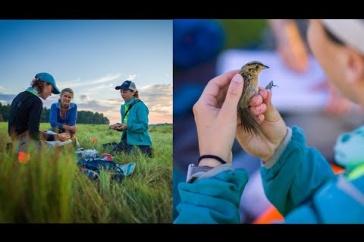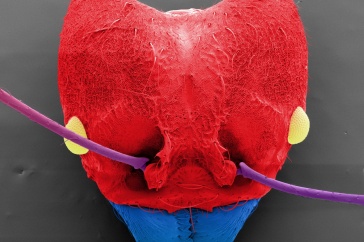
Anna Dorrance ’19 didn’t know much about Jonah crabs before she started doing research with Win Watson, professor of biological sciences at UNH. It turned out she’s not the only one; there isn’t a lot known about how the species molts or mates or even how it grows. And that made it the perfect research project for Dorrance, a marine, estuarine and freshwater biology major, to present at this year’s Undergraduate Research Conference (URC).
This was Dorrance’s second time at the URC. In 2017, she did research on cyanobacteria. She then applied for a grant to do lobster research with Watson. When that didn’t come through, he suggested she get involved with his Jonah crab project. Dorrance started that work last summer.
“If you rip or tear a claw off, the wound is larger than if you cut the claw off, and that can impact mortality."
“It turned out I ended up with more questions than when I started, so I asked if I could continue,” she says. Dorrance has now spent more than a year studying the hard-shelled crabs that are found in the Atlantic from Newfoundland to Florida. Her URC work looked at the sublethal effect of removing their claws and how or if that changed their behavior.
For years, Jonah crabs were a bycatch of the fishing industry, caught inadvertently in lobster traps. But a decrease in lobsters and an increase in the price of other crabs has created a market for the Jonah crabs, particularly their claws. As the new fishery grows, one of the key questions is if the current method of declawing will reduce the population.
“If you rip or tear a claw off, the wound is larger than if you cut the claw off, and that can impact mortality,” Dorrance says.
Her URC research was based on the current fishery practice that allows for the removal of both claws and then returning the crabs to the ocean. The assumption, Dorrance says, is that the crabs survive the process, but that is not a certainty. She found data that showed manually declawing the crabs had a higher mortality rate than using snippers. The focus then became whether claw removal affected the crabs’ mobility and ability to feed.
“When the crabs were in a small container, they didn’t move around a lot. Once they were moved to larger tanks and were around other crabs, they were more active,” the Morrisonville, New York, resident says. “But that lessened once their claws were removed.”
To assess feeding ability, blue mussels were placed on ceramic tiles inside an aquarium with the crabs, whose movements were recorded on video.
“I then calculated how long it took the crabs to open the mussels,” says Dorrance, whose love of the ocean and marine life came from playing in tidal pools when she was young. “The crabs with claws crushed and pried open clumps of mussels, but those without claws couldn’t crush the mussels, so they only pried them open one at a time.”
Another part of the research had the crabs (with and without claws) fitted with acoustic tags and released in cages by divers off the coast of New Castle, New Hampshire. Their movements were tracked daily over the course of 55 days. Male crabs without claws moved less than females and males with claws, Dorrance discovered.
“The tags gave me the ability to see how the crabs behaved in the real world,” she says. “This kind of data could help experts decide if it is better to harvest the whole animal or just remove their claws. But there is still a lot we don’t know. It’s going to take more research.”
Learn what you can do with a degree in marine, estuarine and freshwater biology.
-
Written By:
Jody Record ’95 | Communications and Public Affairs | jody.record@unh.edu



















































